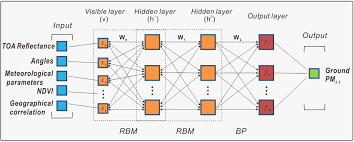
Unveiling the Magic of Deep Learning: An Illustrated Journey
Deep Learning Illustrated
Deep learning is a subset of machine learning that has gained significant attention in recent years due to its ability to solve complex problems and make accurate predictions. In simple terms, deep learning involves training artificial neural networks to learn and make decisions similar to the human brain.
One of the key components of deep learning is the use of multiple layers of interconnected nodes, known as neurons, in neural networks. These layers help the network to extract features from raw data and learn patterns that are essential for making predictions.
Illustrating deep learning can be challenging due to its complex nature, but one common analogy used is that of a human brain. Just like how our brain processes information through interconnected neurons, deep learning models use artificial neurons to process data and make decisions.
Imagine a deep learning model as a black box that takes in data, processes it through multiple layers of neurons, and produces an output based on what it has learned. This process is repeated many times during training until the model can accurately predict outcomes.
Applications of deep learning are vast and diverse, ranging from image and speech recognition to natural language processing and autonomous driving. By leveraging the power of deep learning, researchers and developers are able to tackle complex problems that were once thought impossible.
In conclusion, deep learning is a powerful tool that continues to revolutionize various industries by enabling machines to learn from data and make intelligent decisions. As technology advances further, we can expect even more innovative applications of deep learning that will shape the future.
Mastering Deep Learning: 6 Essential Tips for Success
- Start with the basics
- Learn about neural networks
- Experiment with different deep learning frameworks like TensorFlow or PyTorch.
- Preprocess your data
- Regularisation is key
- Practice makes perfect”
Start with the basics
When delving into the world of deep learning illustrated, it is essential to begin by grasping the fundamentals. Starting with the basics lays a solid foundation for understanding the complexities of neural networks and their applications. By mastering the core principles of deep learning, such as neural network architecture and training processes, one can gradually progress towards more advanced concepts with confidence and clarity. Embracing this approach ensures a comprehensive understanding of deep learning illustrated and paves the way for exploring its vast potential in various fields.
Learn about neural networks
Understanding neural networks is crucial when delving into the world of deep learning. Neural networks serve as the backbone of deep learning models, mimicking the interconnected structure of the human brain to process data and make informed decisions. By learning about neural networks, one can grasp the fundamental building blocks of deep learning and gain insight into how these artificial systems can learn and adapt based on the data they are trained on. Delving deeper into neural networks can unlock a deeper understanding of how complex tasks are tackled in deep learning applications, paving the way for more advanced and innovative solutions in artificial intelligence.
Experiment with different deep learning frameworks like TensorFlow or PyTorch.
To enhance your understanding of deep learning illustrated, it is beneficial to experiment with various deep learning frameworks such as TensorFlow or PyTorch. These frameworks provide powerful tools and resources to build and train neural networks effectively. By exploring different frameworks, you can gain valuable insights into their unique features and capabilities, enabling you to choose the most suitable one for your specific deep learning projects. Experimenting with TensorFlow or PyTorch not only broadens your knowledge but also equips you with the skills needed to tackle diverse challenges in the field of deep learning.
Preprocess your data
When delving into the realm of deep learning illustrated, a crucial tip to keep in mind is to preprocess your data effectively. Preprocessing involves cleaning, transforming, and organising your data before feeding it into the deep learning model. By ensuring that the data is in the right format and free from inconsistencies or errors, you can enhance the performance and accuracy of your model. Proper preprocessing sets a strong foundation for successful deep learning outcomes by allowing the model to learn patterns more effectively and make better predictions.
Regularisation is key
Regularisation is a crucial concept in deep learning illustrated. It plays a vital role in preventing overfitting and improving the generalization ability of neural networks. By adding regularisation techniques such as L1 or L2 regularization during the training process, we can effectively control the complexity of the model and avoid capturing noise in the data. Regularisation ensures that our deep learning models learn meaningful patterns from the data, leading to more robust and accurate predictions.
Practice makes perfect”
The tip “Practice makes perfect” is particularly relevant when it comes to understanding and mastering the intricacies of deep learning. Just like any other skill or discipline, becoming proficient in deep learning requires consistent practice, experimentation, and dedication. By actively engaging with neural networks, training models, and working on various projects, individuals can gradually enhance their understanding of deep learning concepts and techniques. Through continuous practice and hands-on experience, one can refine their skills, troubleshoot challenges effectively, and ultimately achieve proficiency in the field of deep learning.
